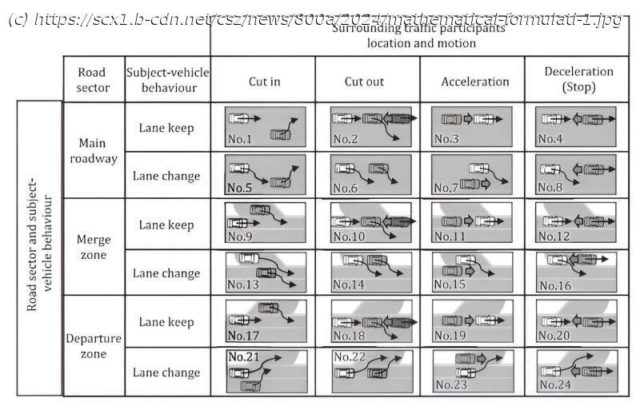A research group including Professor Hasuo Ichiro of the Information Systems Architecture Science Research Division of the National Institute of Informatics, Dr. Waga Masaki, Assistant Professor of the Department of Informatics .
A research group including Professor Hasuo Ichiro of the Information Systems Architecture Science Research Division of the National Institute of Informatics, Dr. Waga Masaki, Assistant Professor of the Department of Informatics in the Graduate School of Informatics of Kyoto University and others has mathematically formulated the hazardous scenarios specified in ISO 34502, an international standard that stipulates a framework for the safety assurance of vehicles with automated driving systems as a part of the Exploratory Research for Advanced Technology.
This research translates hazardous scenarios traditionally described in English and other natural languages into descriptions in a formal language called signal temporal logic (STL). This fixes the meanings of hazardous scenarios that may cause differences in interpretation and opens the way to the automation and streamlining of safety evaluation tasks using hazardous scenarios.
This achievement has positive effects on the safety assurance of automated driving vehicles. It also suggests that mathematics plays a significant role in the utilization of requirements likened to contracts between information systems and the human society.
The research findings were presented on April 9, 2024, at the 39th ACM/SIGAPP Symposium on Applied Computing (SAC), an international conference on application of informatics.
Key Points
To make the automated driving technologies widely accepted in society, merely improving the safety of automated driving vehicles is insufficient. It is necessary to guarantee their high level of safety and explain this to society to persuade society to accept automated driving vehicles operating on public roads. In Japan and abroad, many different safety assurance frameworks have been proposed. Among them, ISO 34502 is a framework that originated in Japan based on the efforts of Japan Automobile Manufactures Association, Inc.
ISO 34502 provides a comprehensive list of hazardous scenarios faced by automated driving vehicles. They are based on a combination of hazardous elements at each of the three phases, perception, decision and control, that the operations of vehicles equipped with automated driving systems are divided into. This stance takes the approach of guaranteeing the safety of automated driving vehicles by assessing whether or not proper safety actions can be taken in these hazardous scenarios.
Home
United States
USA — software Mathematical formulation of hazardous scenarios for automated driving systems






